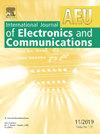Optimization and performance analysis of UAV-based full-duplex systems with residual transceiver hardware impairments
IF 3.2
3区 计算机科学
Q2 ENGINEERING, ELECTRICAL & ELECTRONIC
Aeu-International Journal of Electronics and Communications
Pub Date : 2025-09-26
DOI:10.1016/j.aeue.2025.156045
引用次数: 0
Abstract
In this paper, we study a full-duplex (FD) unmanned aerial vehicle (UAV) communication system affected by residual transceiver hardware impairments (RTHI) and residual self-interference (RSI). We derive analytical expressions for the symbol error probability (SEP) and achievable rate (AR) under the separate and combined effects of RTHI and RSI. To mitigate the negative impact of these impairments, particularly RSI inherent in FD operation, we propose an optimal UAV transmit power scheme that minimizes the SEP or, equivalently, maximizes the AR, subject to RTHI, RSI, and a practical transmit power constraint. The derived expressions are validated through Monte-Carlo simulations. Numerical results show that both RTHI and RSI significantly affect system performance. When one impairment is small, the effect of the other becomes more noticeable. When both are strong, SEP and AR rapidly saturate. In such cases, the proposed power control strategy helps reduce SEP, increase AR, and prevent saturation at high transmit power levels. The results also show that using optimal transmit power improves the performance of FD systems compared to conventional half-duplex (HD) systems. Importantly, the optimal transmit power is much lower than the traditional power commonly used by UAVs. As a result, the full-duplex unmanned aerial vehicle (FD-UAV) system with RTHI consumes less power than the scenario without power optimization. We also analyze the impact of modulation order, bandwidth, UAV altitude, and operating frequency on SEP and AR. Based on the results, we provide useful recommendations to improve the performance of FD-UAV systems under RTHI and RSI.
具有剩余收发器硬件损伤的无人机全双工系统优化与性能分析
本文研究了受剩余收发器硬件损伤(RTHI)和剩余自干扰(RSI)影响的全双工(FD)无人机通信系统。我们推导了在RTHI和RSI单独和联合作用下的符号误差率(SEP)和可达率(AR)的解析表达式。为了减轻这些损伤的负面影响,特别是FD操作中固有的RSI,我们提出了一种优化的无人机发射功率方案,在RTHI、RSI和实际发射功率约束的情况下,将SEP最小化,或者等效地最大化AR。通过蒙特卡罗仿真验证了所得表达式的正确性。数值结果表明,RTHI和RSI对系统性能都有显著影响。当一种损伤很小时,另一种的影响就会变得更加明显。当两者都很强时,SEP和AR迅速饱和。在这种情况下,所提出的功率控制策略有助于降低SEP,增加AR,并防止高发射功率水平下的饱和。结果还表明,与传统的半双工(HD)系统相比,使用最佳发射功率可以提高FD系统的性能。重要的是,最佳发射功率远低于无人机常用的传统功率。因此,采用RTHI的全双工无人机(FD-UAV)系统的功耗低于未进行功率优化的情况。本文还分析了调制顺序、带宽、无人机高度和工作频率等因素对系统SEP和AR的影响,并在此基础上提出了改进FD-UAV系统在RTHI和RSI下性能的建议。
本文章由计算机程序翻译,如有差异,请以英文原文为准。
求助全文
约1分钟内获得全文
求助全文
来源期刊
CiteScore
6.90
自引率
18.80%
发文量
292
审稿时长
4.9 months
期刊介绍:
AEÜ is an international scientific journal which publishes both original works and invited tutorials. The journal''s scope covers all aspects of theory and design of circuits, systems and devices for electronics, signal processing, and communication, including:
signal and system theory, digital signal processing
network theory and circuit design
information theory, communication theory and techniques, modulation, source and channel coding
switching theory and techniques, communication protocols
optical communications
microwave theory and techniques, radar, sonar
antennas, wave propagation
AEÜ publishes full papers and letters with very short turn around time but a high standard review process. Review cycles are typically finished within twelve weeks by application of modern electronic communication facilities.

 求助内容:
求助内容: 应助结果提醒方式:
应助结果提醒方式:


